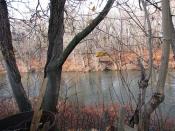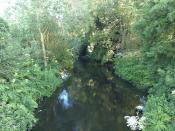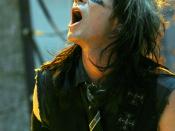Sheila Finch's "Out of the Mouths" is, on the surface, a short story about the scientific use of a developping relationship between a human and alien child to learn an alien language. Beneath the surface, it is resonant with important themes. Although short, it delivers as good a story and as important a message as any novel. This is because of Finch's use of imagery. Through this poetic device, she makes apparent to attentive readers the nature of each of her characters and the theme of the story as a whole.
First of all, imagery shaped Heron, the linguist, as a character. At the opening of the story, Finch uses nature to emphasize the feeling that this man was well past his prime: "Tattered curls of autumnal mist caught in the low boughs of oak and alder; patches of night still lingered" (92). Autumn is an archetype, symbolic of old age; it is past the fruition of summer, but not quite as dead as winter.
The ancient, drooping trees with their falling leaves and the night suggested that Heron's time was almost up. This connection was made clearer later: "The telling of his story sucked energy from his bones like sap retreating from the leaves and branches of deciduous trees as winter conquered the land. ⦠He felt his own December approaching" (115-6). As autumn gave way to winter, so Heron's body would give way to death. Imagery was also used to show Heron's connection with nature, or at least with his surroundings. For example, he would always pay more attention to animals than to Magistra Orla Eiluned: "Outside his window, a late dragonfly hovered ⦠he watched until it darted away" (109). The story appealed not only to the visual, but to other senses as well; the smell...


